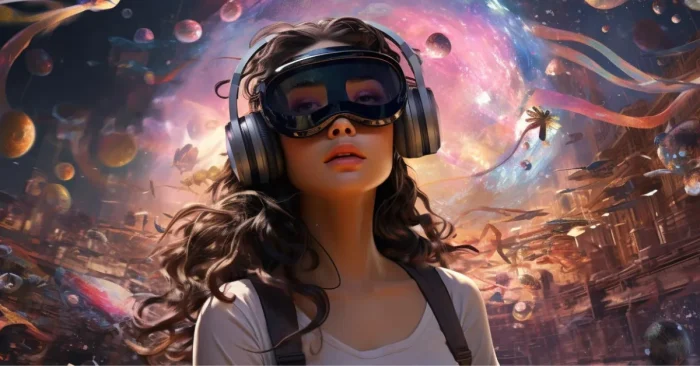Understanding AI Video Storytelling
Telling stories is the soul of engaging video. Recently, AI has evolved from pure automation into creative collaboration as it aids creators in conceiving narratives, generating scenes, piecing together edits, and modifying stories for different audiences. Regardless of whether you’re creating a brand short, social series, or instructional module, AI video storytelling tools enable faster ideation and facilitate pacing and the visualization of ideas that previously took days to execute and review.
This guide explains what AI video storytelling is and described as AI video storytelling AI in product copy), how it operates, essential features, advantages and limitations, real-world applications, common tools creators use today and frequently asked questions people have before embracing it.
What Is AI Video Storytelling?
AI-based video storytelling is merging narrative design with machine learning in order to help at every stage of video production: concept, script, shot list, edit, and distribution. These AI tools are not meant to replace storytellers, but rather serve as co-creators. For example, they may suggest story arcs, create image assets based on text prompts, generate voiceovers, or automatically cut footage to match a particular mood or beat. The objective of these AI tools are to make story-first video production faster and more data-driven.
How Does AI-Based Video Storytelling Work?
In the background, unique models handle specific tasks. For example, natural-language models can generate or refine scripts and shot lists. Vision models can generate or support image generation, creative scene continuity in shots, and clean-up or suggest edits to resolve creative continuity in a scene. Audio models can generate voiceovers or clean up and mix music assets. Editing models can evaluate the pacing of an edit, tone of clips, and viewer engagement signals to help support cuts and highlight reels. These systems will be orchestrated by a sequence engine that maps inputs, assets, brand rules) to output templates and iterates against human feedback.
Why It Matters for Creators
Good storytelling is expensive in time and attention. AI video storytelling lowers the friction: it helps non-experts craft coherent narratives, scales A/B testing of different edits, and makes it practical to produce multiple versions of a story tailored to platforms or audiences. For brands, it means faster campaign cycles and more consistent messaging; for educators, it brings modular, personalized lessons; for filmmakers, it speeds previsualization and rough cuts.
Core Features to Expect
- Script generation and outline suggestions based on prompts or briefs.
- Text-to-video or scene-generation assistance for concept visualization.
- Automated editing: beat-aware cuts, pacing adjustments, and highlight reels.
- Voice synthesis and auto-dubbing for multilingual stories.
- Shot-list and storyboard export for production teams.
- Smart asset management: tag, search, and reuse assets across episodes.
Benefits and Limitations
Advantages of Using AI for Video Storytelling
AI speeds up ideation and iteration. It can suggest stronger narrative structures, identify weak pacing, and generate multiple edit variants quickly. For content teams, that means more tests, faster learning, and higher-quality output with fewer resources. It also enables personalization at scale—tailoring the same story to different audience segments or platforms without rebuilding from scratch.
Challenges and Limitations
AI is powerful but imperfect. Script and scene suggestions may be generic without good prompts. Visual generation still struggles with complex interactions, fine human expressions, and consistent character continuity across scenes. Over-reliance on automation can produce formulaic stories; human oversight is essential to preserve voice, nuance, and ethical considerations like representation and accuracy.
Who Benefits Most?
Marketing teams, social creators, independent filmmakers, educators, and training teams all benefit. Smaller teams gain production horsepower, while larger studios use AI to accelerate previsualization and routine post-production tasks. Anyone who needs to publish many narrative-driven videos quickly will find value.
Top Use Cases
- Social campaigns: rapidly create multiple cuts optimized for platforms.
- Product storytelling: short narrative ads that highlight use cases and emotion.
- Educational series: modular lessons that adapt to learner progress.
- Internal comms: quick explainer videos and CEO messages turned into polished edits.
- Previsualization: directors visualize scenes before shooting to save time on set.
Top 5 Tools for AI Video Storytelling
1. Runway
Runway combines generative visuals, editing workflows, and collaborative tools—useful for prototyping scenes and iterating on looks quickly.
2. Pictory
Pictory converts scripts and long-form content into short narrative videos, automating captioning, scene selection, and caption-safe edits.
3. Descript
Descript focuses on transcript-driven editing, making story assembly as easy as editing text—great for interviews, documentaries, and explainer videos.
4. Synthesia
Synthesia uses AI avatars and multilingual voiceovers to create scalable narrative content—handy for training, localized marketing, and quick vignettes.
5. Adobe Premiere Pro (with Sensei features)
Adobe pairs professional-grade editing with AI-assisted features like scene edit detection and auto-reframe, giving storytellers both control and speed.
FAQs About AI Video Storytelling
1. Will AI replace screenwriters and directors?
No. AI is a collaborator, not a replacement. It accelerates repetitive tasks and suggests options, but creative judgment, emotional nuance, and final decisions remain human responsibilities. The best results come from human-AI teams.
2. Can beginners create compelling stories with AI?
Yes AI lowers the technical barrier, helping beginners draft scripts, assemble rough cuts, and produce shareable videos. However, learning basic storytelling—structure, character, stakes still helps improve AI outputs significantly.
3. Does AI support multilingual storytelling?
Many tools offer voice synthesis and auto-dubbing, enabling easy localization. Quality varies by language and tool, so always review for naturalness and cultural accuracy before publishing.
4. Are there ethical concerns when using AI for stories?
Yes. Issues include hallucinated facts, biased portrayals, deepfake risks, and copyright of generated assets. Good practice includes human review, source attribution, consent for actor likenesses, and transparent labeling when synthetic media is used.
















